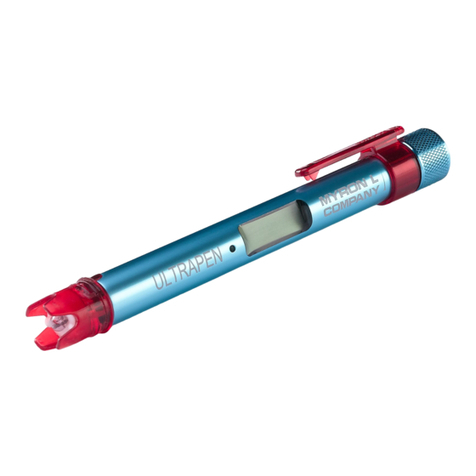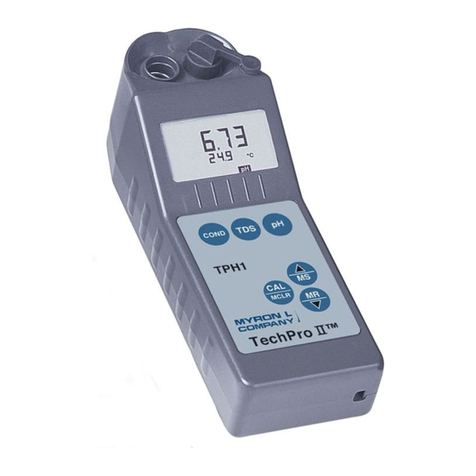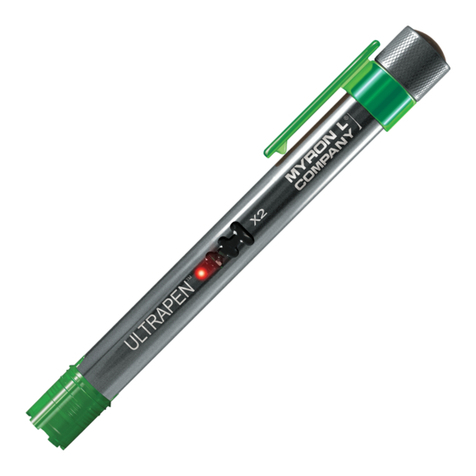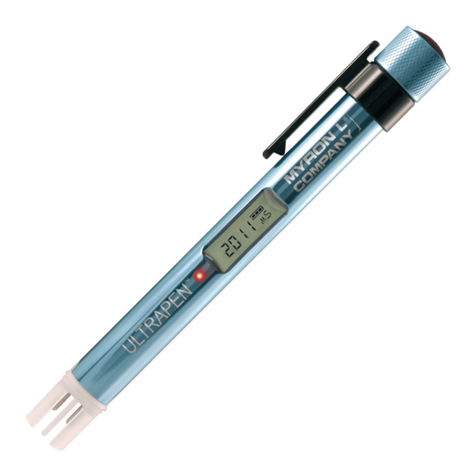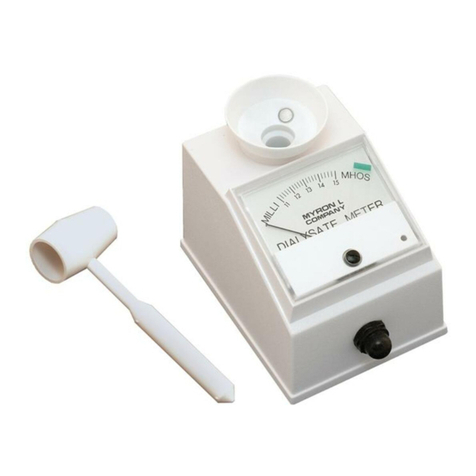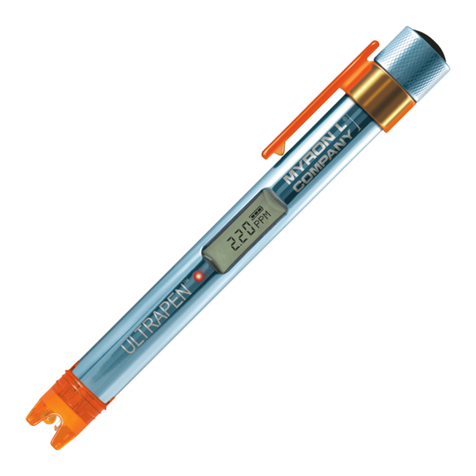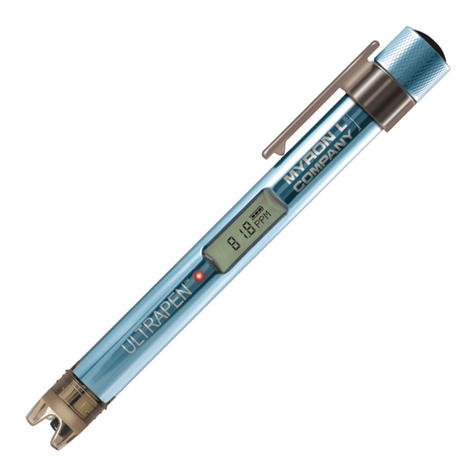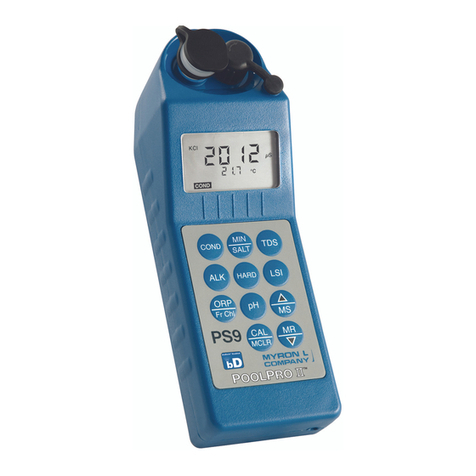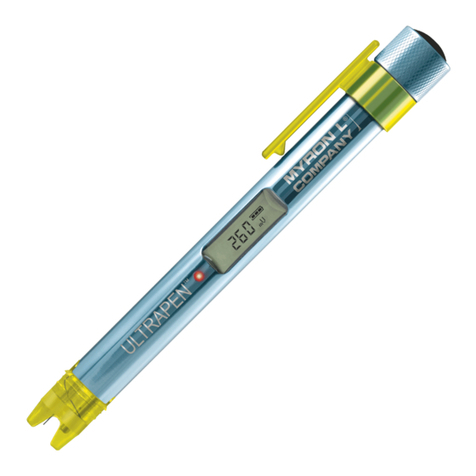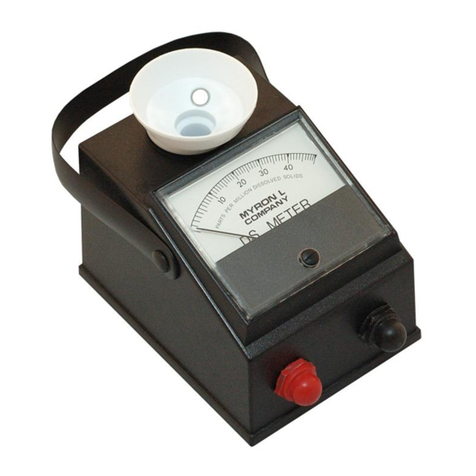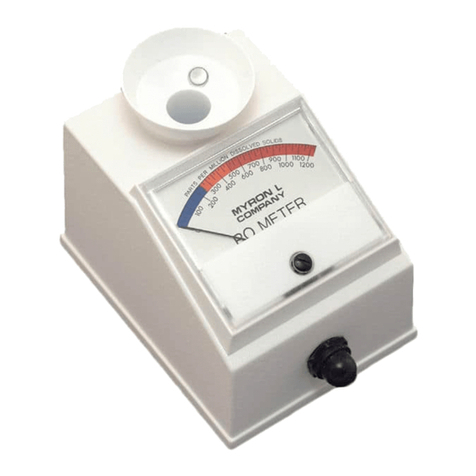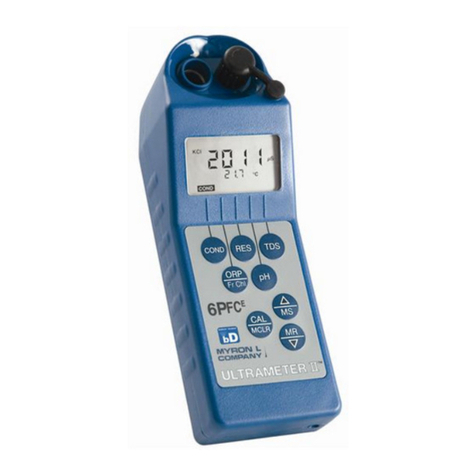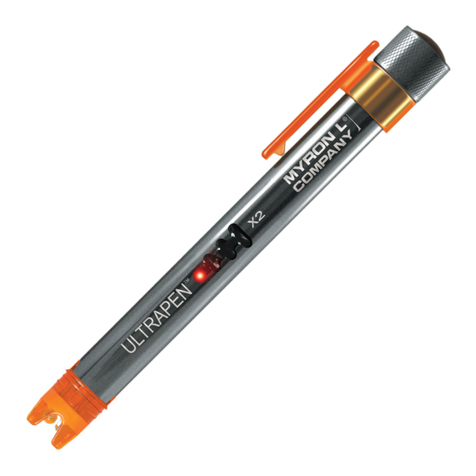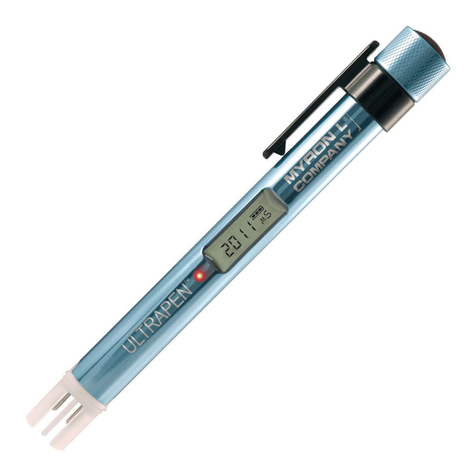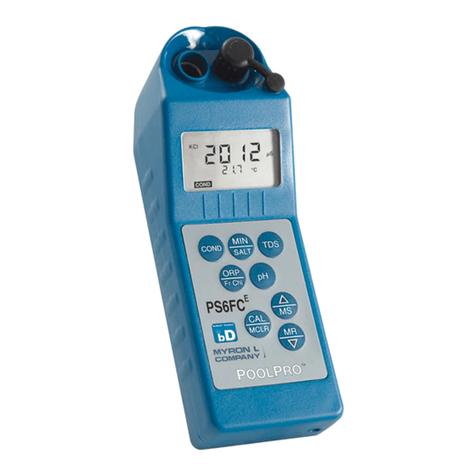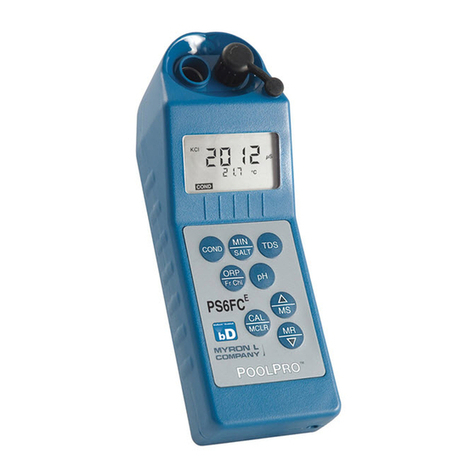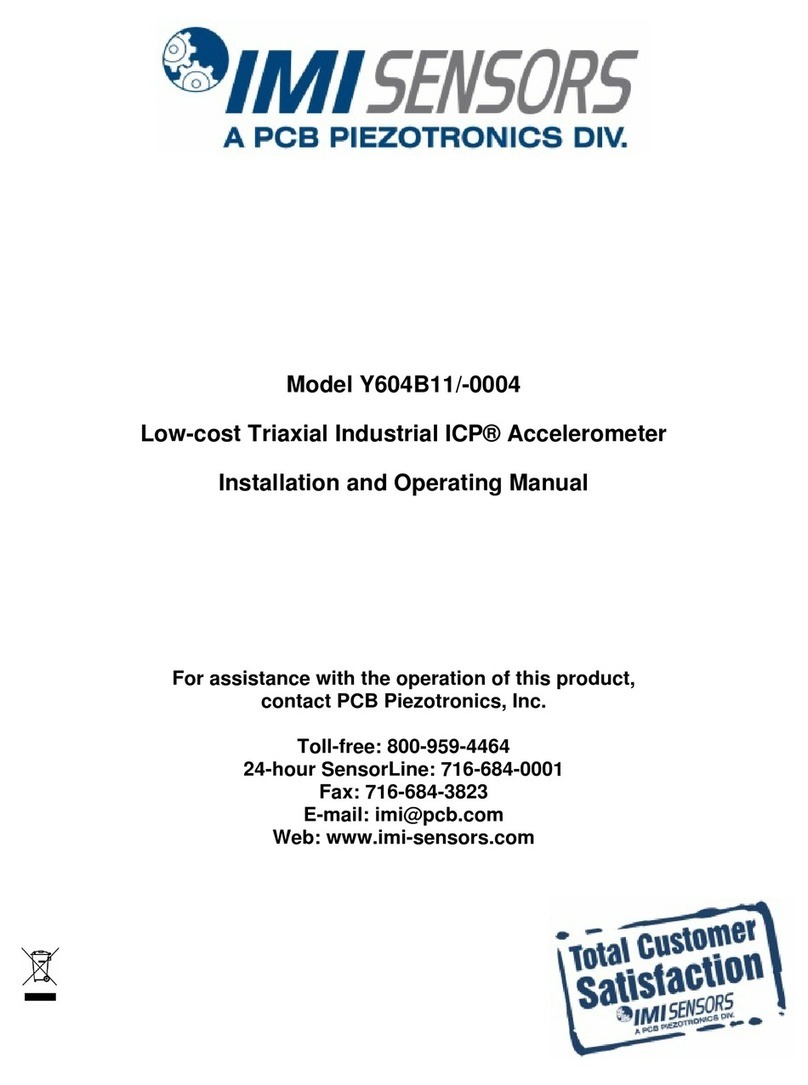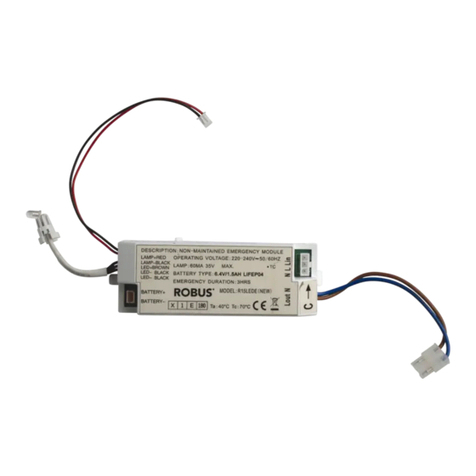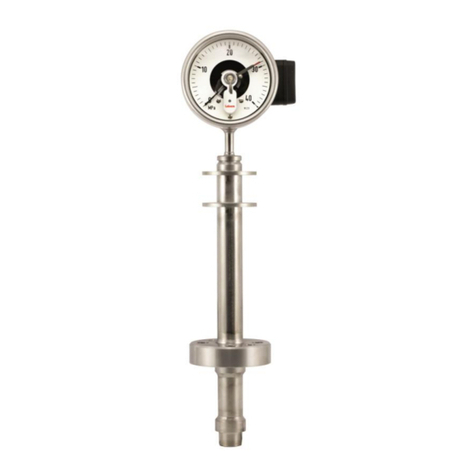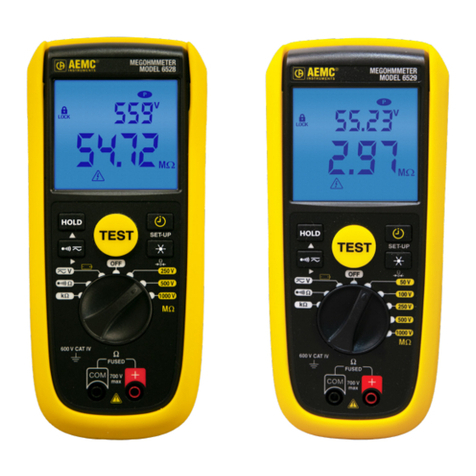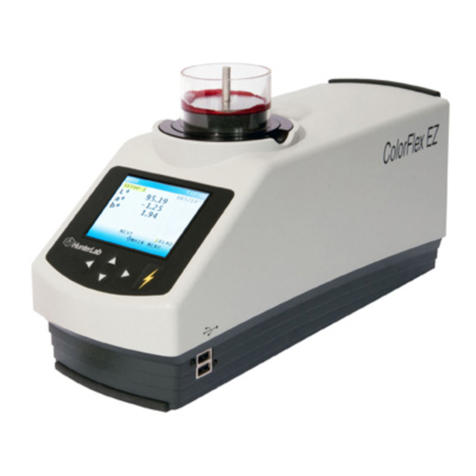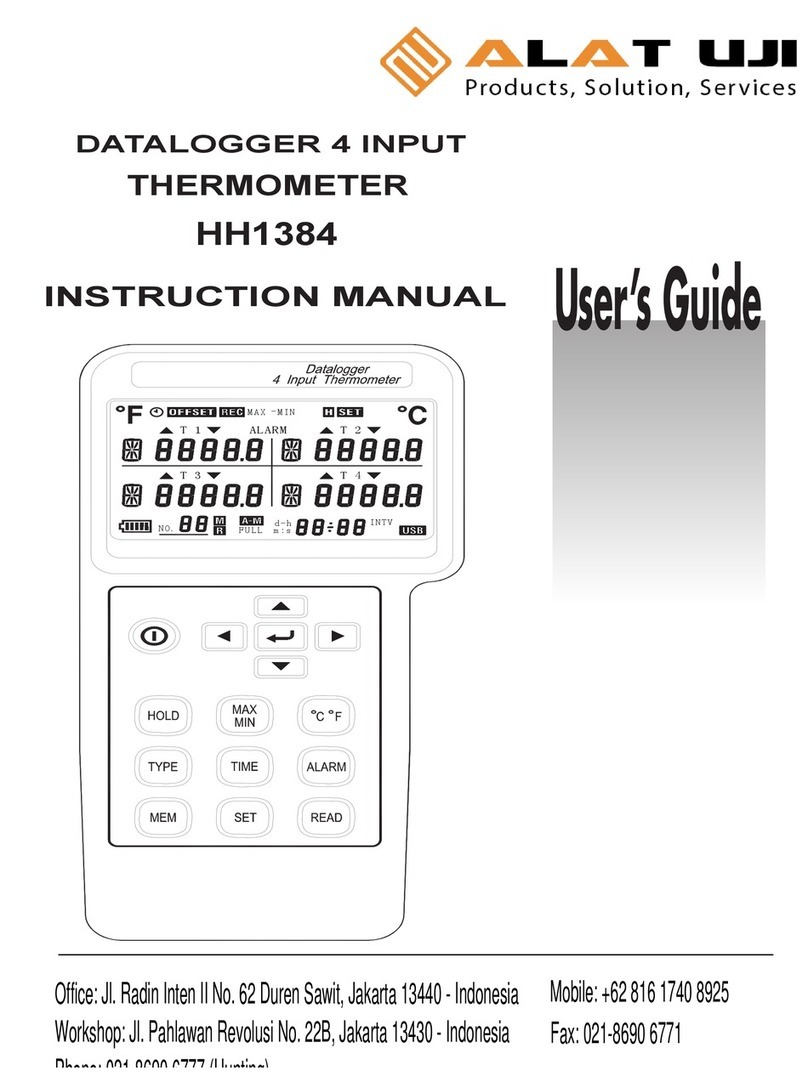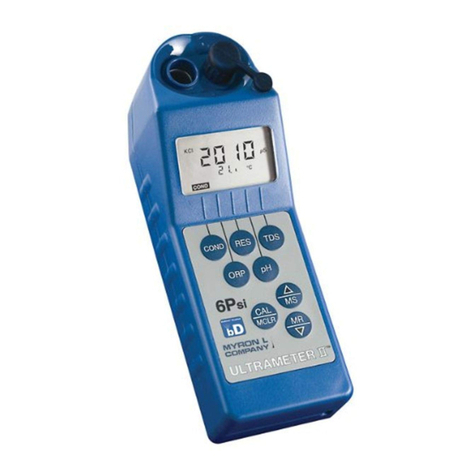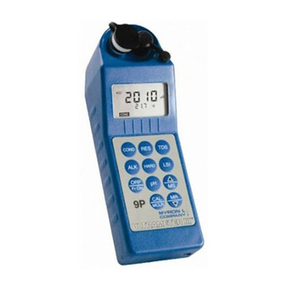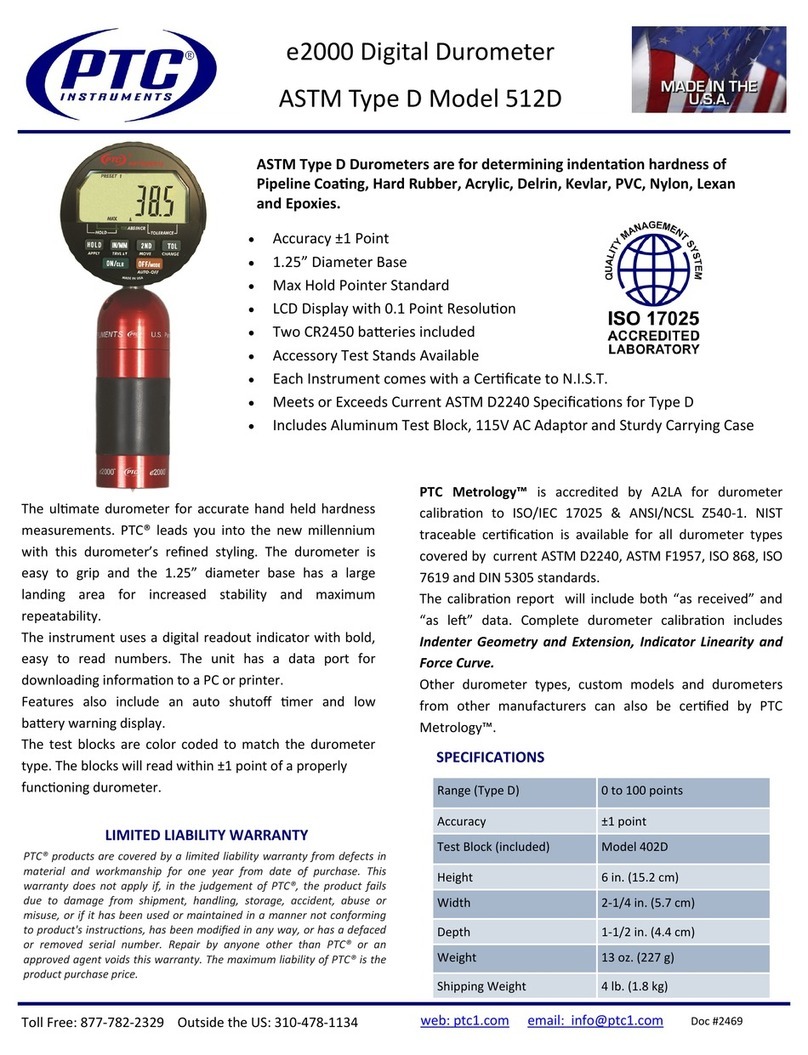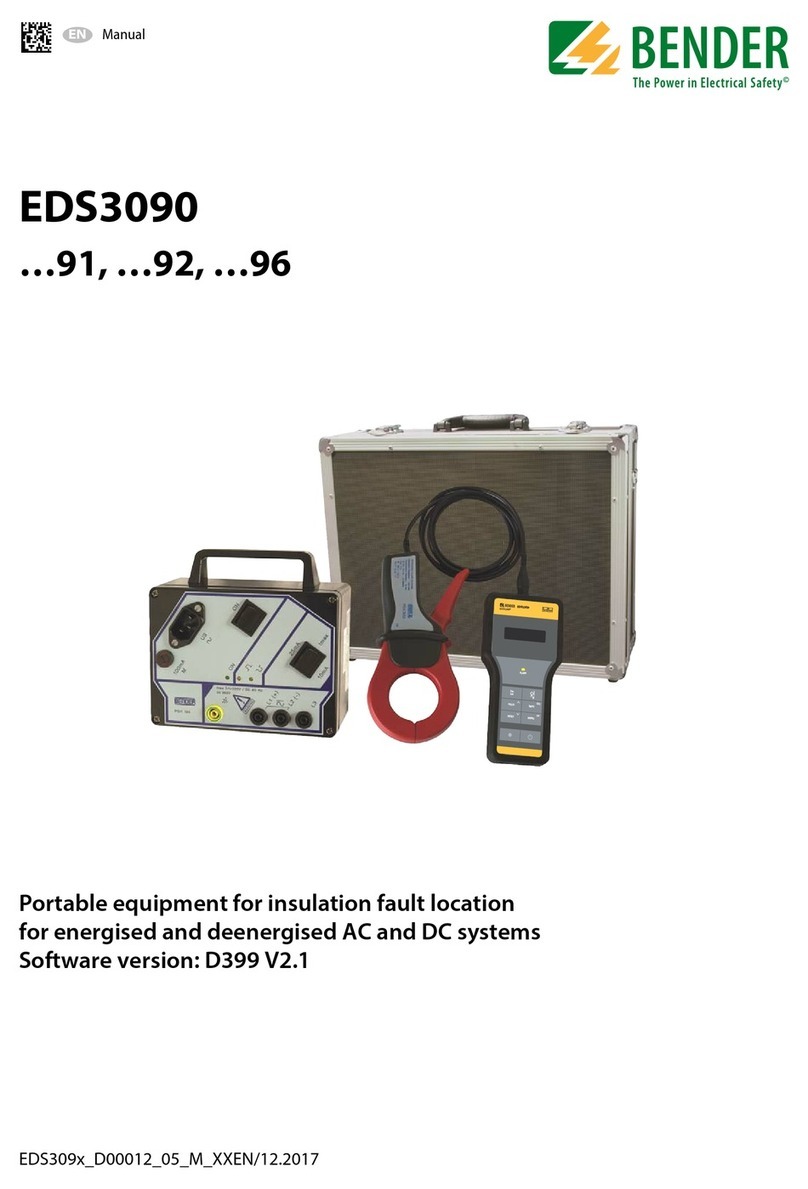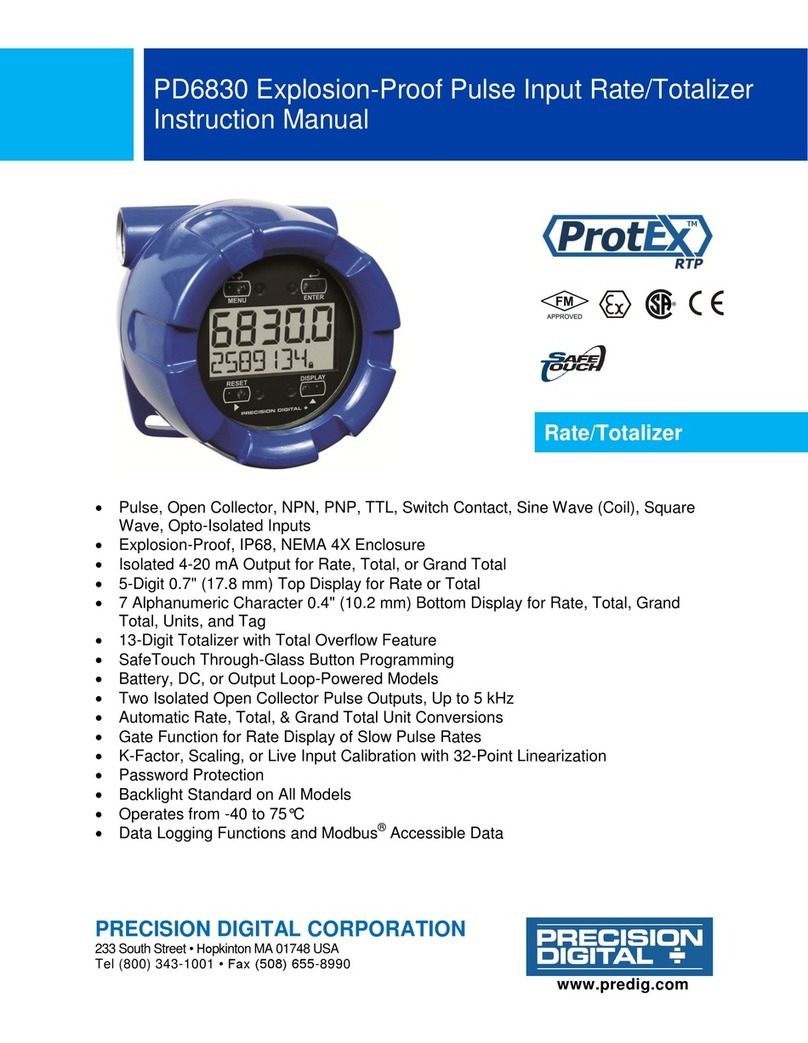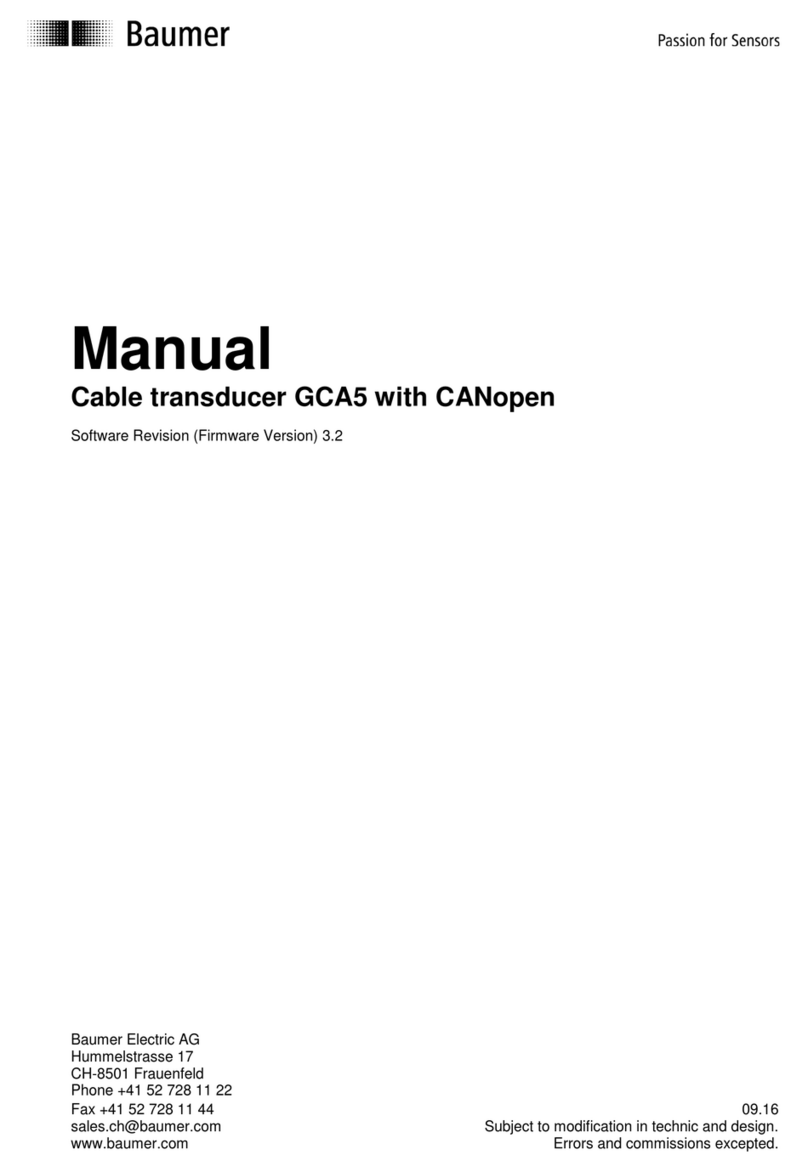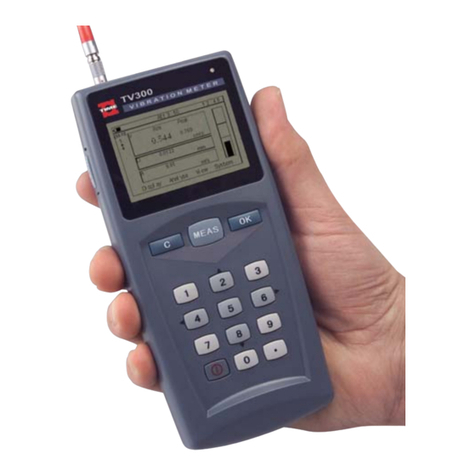
1
I. INTRODUCTION
Thank you for selecting the feature-packed Ultrameter III™, one of the
Myron L® Company’s latest in an increasing line of instruments utilizing
advanced microprocessor-based circuitry and SMT manufacturing
processes. This circuitry makes the instrument extremely accurate,
reliable and very easy to use.
The Ultrameter III has been designed to include titration measurements
for Alkalinity, Hardness and an LSI Calculator for water balance analysis.
The Ultrameter III also features Myron L® Company's exclusive Free
Chlorine Equivalent (FCE ) function for making ORP-based free chlorine
measurements, as well as optional Bluetooth® wireless data transfer.
Other features include a clock with time and date, memory of up to 100
locations with time and date stamp, the ability of the user to adjust the
timeout “Auto OFF”, and enhanced performance. See Features and
Specications on pages 2-3.
The most exciting feature is data logging with the ability to wirelessly
download the memory or stored test data with its corresponding time, date
and unit name (requires -BD option or bluDockTM accessory). This feature
allows the user to create spreadsheets and graphs with ease, and quickly
and accurately manipulate data more effectively. The bluDock's Guardian2 TM
application will operate on Windows® 7 or later/macOS® 10.13 or later with
Bluetooth® capability. The data may be exported to spreadsheet formats
such as Microsoft Excel® (.xls and .xlsx) or universal formatting (.csv). The
user can also save data in a secure, encrypted format (.mlcx).
Please Note: Although the Myron L® Company has performed extensive
testing, we cannot guarantee compatibility of all applications and
formats. We suggest testing your application and format for compatibility
before relying on it.
For your convenience, a brief set of instructions is provided on the
bottom side of your Ultrameter III. A Quick Start Guide with abbreviated
instructions is also included with the instrument as a quick reference.
Special note ... Conductivity, resistivity, and TDS require mathematical
correction to 25°C values (ref. Temperature Compensation, pg. 56). On
the left of the Ultrameter III’s liquid crystal display is shown an indicator of
the salt solution characteristic used to model temperature compensation
of conductivity and its TDS conversion. The indicator may be KCl,
NaCl, 442™ or User. Selection affects the temperature correction of
conductivity and the calculation of TDS from compensated conductivity
(ref. Conductivity Conversion to Total Dissolved Solids (TDS), pg. 59).
The selection can affect the reported conductivity of hot or cold solutions
and will change the reported TDS of a solution. Using KCl for conductivity,
NaCl for resistivity, and 442™ (Natural Water characteristic) for TDS is
consistent with present industry practice for standardization. This is how
your instrument, as shipped from the factory, is set to operate. For use in
seawater desalination for example, both the conductivity and TDS may
easily be changed to NaCl.
TM
TM





















